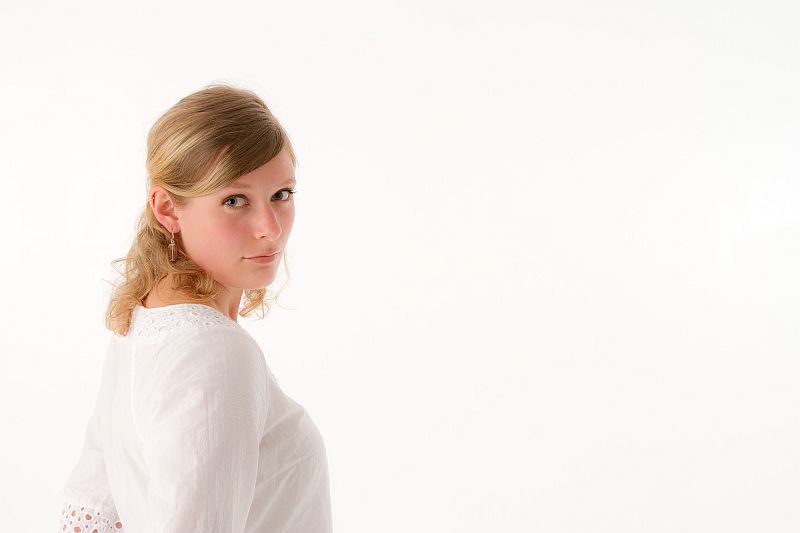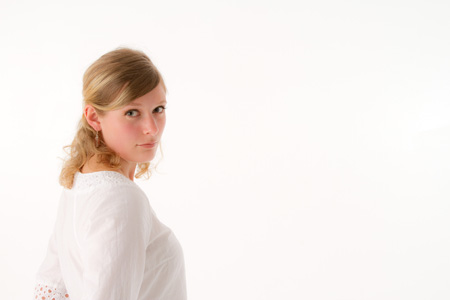At the end of May I had the privilege of digitally photographing Heidi Wall, a young, virtuoso pianist who recently completed her degree in Music Performance at Wilfrid Laurier University. Heidi was interested in a high-key look with a solid white background, so for that we rented studio space in Stratford from Lori-Ann Franklin at Laf’s Photography. Kevin Garrett was my “assistant” – I use “assistant” in quotation marks since it became abundantly clear during the shoot who was the “teacher” and who was the “student”.
The first issue in setting up the high-key shots was the relative power of the strobes to light the background, versus the power of the strobe filtered by the enormous octogonal softbox in the LAF studio. Ordinarily, when I use a white muslin as a backdrop I light it two stops higher than the light for the subject, to ensure that the background is white and that the creases in the backdrop do not show in the image – much harder to eliminate when using film than with digital. At the LAF studio, however, there were two issues that I failed to properly recognize:
- The cove wall and floor were painted gloss white; and
- There was arguably insufficient distance between the wall and the subject, which created blow-back.
What this meant on the trial setup, before the shoot properly got underway, was that while the background was white, the colour of the floor underneath the subject was wrong – it was not white, but yellow. I futzed with the setup for several minutes to try to eliminate the difference, but could not – until Kevin intervened, quickly realizing that the strobes lighting the background were too hot and it was the blow-back that resulted that was changing the colour of the floor lit by the octogonal softbox. A complete re-calibration of the strobes solved that problem. Lesson learned.
The photograph above was taken later on, in a deliberate attempt to create a high-key image that blurred Heidi’s white top into the background. The image was overexposed 1 2/3 stops. Post-processing involved converting the image to black-and-white, pushing the red and green channels so as to accentuate the whiter portions of the image. This was followed by a colour curve adjustment, following Alex Wilson’s tutorial, which further increased the contrast and nicely minimized the splash of freckles across Heidi’s nose and cheekbones.
This second image was taken early on, purposefully leaving negative space on the right-hand side. I really like the backward glance in this image – it continues to get positive comments from the various people that have seen it. I particularly like the lace detail on the collar and on the sleeve.
Both images were taken with a Canon 7D and a Canon 24-105L IS lens with no filtration. The first image was taken at ISO 125 at f/13 and 1/125 sec, but the strobes moved much closer to the subject to permit overexposure. The second image was taken at ISO 125 at f/11 and 1/125 sec.


